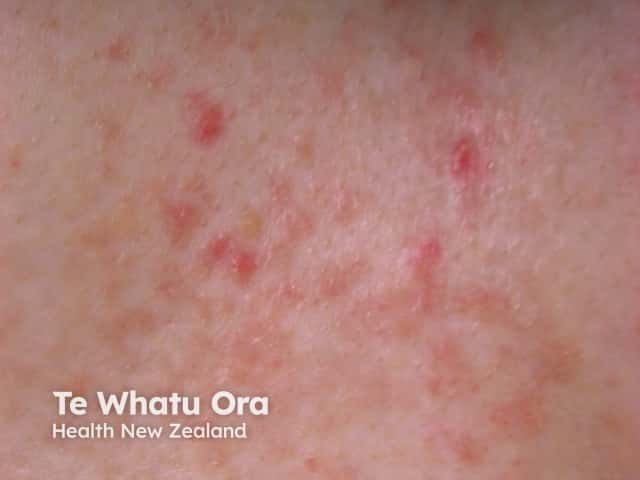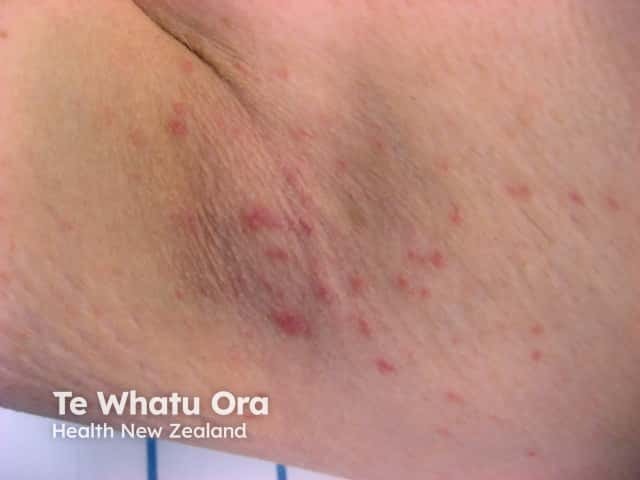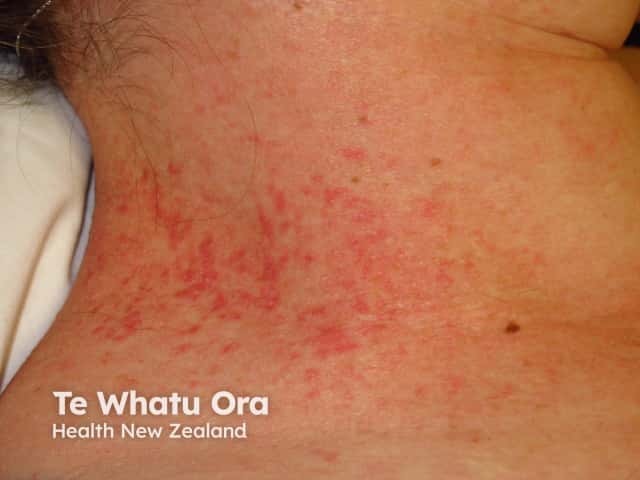Main menu
Common skin conditions

NEWS
Join DermNet PRO
Read more
Quick links
Introduction Demographics Genetic cause Clinical features Associated disorders Diagnosis Treatment
Dowling-Degos disease is a rare genetic disease of the skin that presents in adult life with pigmentation, particularly in the folds of the skin. It is also known as ‘pigmented reticulate anomaly of the flexures’. It is important to distinguish this from acanthosis nigricans, which can be a skin sign of internal diseases.
There are a number of probable variants of Dowling-Degos disease:
In a few cases, pigmentation is absent.
Dowling-Degos disease and its variants can either be inherited from one parent (autosomal dominant) or appear without a family history (sporadic). There seems to be a female predominance in reported cases. The onset of classic Dowling-Degos disease is in adult life, most commonly in the 20s or 30s but sometimes later. It slowly becomes more extensive with time. Gene defects that result in an inability to produce keratin 5 have recently been identified in several affected families.
A number of families with classic Dowling-Degos disease and Galli-Galli disease have now been studied genetically. All show a gene mutation that results in a very short keratin 5 protein, so that it is effectively inactive. Keratin 5 is involved in the transfer of the melanin pigment from melanocytes to keratinocytes. It is likely that the different variants will be due to different mutations in the gene.
Dowling-Degos disease affects only the skin and there are no internal effects. Skin affected by Dowling-Degos disease can be itchy, especially in summer when the effects of heat, perspiration and friction aggravate the pigmentation and itch. Blistering is not a feature of this disease.
Five patterns of classic Dowling-Degos and Galli-Galli disease are described.
Freckle-like pigmentation usually first appears in early adult life in the great folds of the skin such as armpits, groin, between and under the breasts. Common sites also include the upper arms, upper inner thighs, behind the knees and neck. It may be localised to one area such as the genitalia (scrotum or vulva) (localised Dowling-Degos disease) or gradually extend to affect most of the skin surface (generalised Dowling-Degos disease). The pigmentation may worsen in pregnancy and with sun exposure.
A number of patterns have been described:
These are small raised scaly pigmented or non-pigmented spots based on hair follicles.

Dowling-Degos disease

Dowling-Degos disease

Dowling-Degos disease

Dowling-Degos disease
These are small flat spots (macular) or raised (papular) spots that are paler than the normal skin.
These are blackhead-like spots most often found on the neck.
These are pitted acne-like scars most often occurring on the chin.
Hidradenitis suppurativa has been reported in association with Dowling-Degos disease more often than would be expected by chance. Thus patients with Dowling-Degos disease are more likely to also have hidradenitis suppurativa.
Other conditions of uncertain relevance have been rarely reported in association with classic Dowling-Degos disease:
There have been a number of case reports describing patients with overlapping features between classic Dowling-Degos disease and the following conditions, but these are now thought to be variants of Dowling-Degos disease.
Kitamura reticulate acropigmentation tends to first appear in childhood or adolescence as:
Haber disease includes a sun-sensitive rosacea-like facial redness which begins in childhood as well as the freckle-like pigmentation and numerous dark warty lesions resembling seborrhoeic keratoses on the trunk.
Symmetrical acropigmentation of Dohi starts to appear in infancy or early childhood as pinpoint to peasized flat (macular) spots of increased and decreased pigmentation on the backs of the hands.
The diagnosis is made on the clinical features and confirmed on skin biopsy.
There are two histological (pathological) variants (see Dowling-Degos disease pathology):
There are no successful treatments. Many creams have been tried including topical steroids, azelaic acid, topical retinoids and depigmenting agents such as hydroquinone.
Topical steroids may help the itch. There has been one case report of the topical retinoid adapalene gel controlling the itch and fading the pigmentation but there was rapid recurrence when it was ceased. Systemic retinoids have also been unsuccessful.
Er-YAG laser treatment to the rash between the breasts has been reported to help with long-term follow-up in one patient. The treated area remained clear but new spots continued to develop in untreated skin.
As Dowling-Degos is a genetic disease there is no curative treatment.